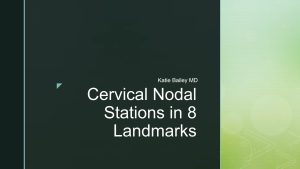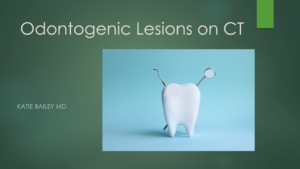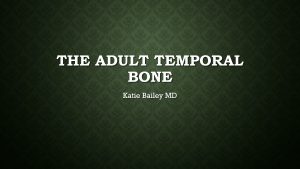Head and Neck Imaging
Imaging of the head and neck can be a real challenge for the beginning radiologist as well as other physicians taking care of patients with disease of the ear, skull base, face, and neck soft tissues. The anatomy is challenging because it is small and complex, and many of the disease processes are quite subtle. To address this challenge, you should have some strategic approaches to the anatomy and pathology that is present in this area.
General Head and Neck Imaging
First things first in head and neck imaging. You need to figure out what exactly you are looking at and looking for. In most cases, we evaluate the head and neck with computed tomography with contrast. Then, you need to figure out a couple of basic things, like where lymph nodes are and how they are named, how the aerodigestive tract is divided up into regions, and what the soft tissue spaces are. Check out the following videos to learn more.
Head and neck imaging landmarks
In this video, you can learn to quickly differentiate the important anatomical subsites of the head and neck on computed tomography. These sites are important because pathology at that location, particularly squamous cell carcinoma, can be staged and treated differently. This makes it important for you to be able to differentiate between these different sites.
Spaces of the head and neck
This video describes the soft tissue spaces of the head and neck, including common normal anatomy and structures found in each region as well as potential pathology that can commonly arise there. By knowing the spaces, you can be more prepared to determine what diseases might occur there and formulate a better differential diagnosis.
Skull Base Foramina Imaging Anatomy
In this video, Dr. Bailey reviews the most important things you should know about the skull base anatomy with an emphasis on CT imaging. With this quick video, in just a few minutes you can learn about the most important skull base foramina when reviewing CT.
Cervical lymph node stations
This quick video walks us through 6 of the common cervical nodal stations in the neck. Each lymph node in the neck is assigned one of these 6 levels based on their relationship with normal anatomic structures in the neck. These stations are important in communicating with other physicians which abnormal nodes we are talking about
Facial fractures
This video is an overview of fractures of the face, including their CT findings and complications. Facial fractures are among the most commonly encountered emergencies, particularly in busy trauma hospitals. Learn some of the common patterns of injury, including orbital fractures, Lefort fractures, zygomaticomaxillary complex fractures, and nasal-orbital ethmoidal fractures.
Imaging the sella
This video goes through imaging of the sella, including a brief review of the contents of the sella, common pathologies on MRI, and an algorithm for refining your differential diagnosis based on location. Common pathologies include pituitary cysts, adenomas, autoimmune hypophysitis, and metastatic disease.
Salivary Glands
This video is an overview of salivary gland lesions, including briefly reviewing the normal anatomy and appearance of the salivary glands, common benign and malignant neoplasms, and other infectious, inflammatory, and systemic processes that may affect the salivary glands.
Sinus CT
This video gives us an overview of how to approach a CT of the sinuses, including an overview of anatomy, some common pathology, and red flags to look out for as you interpret the images.
Odontogenic lesions
This is an overview of odontogenic lesions of the jaw which are associated with teeth. There is a lot of overlap in the imaging appearance of these lesions, so it’s good to familiarize yourself with some of the most common ones.
Orbits
The orbits are common locations of pathology including abnormalities affecting the globes, contents of the orbits including the extra-ocular muscles, optic nerves, lacrimal gland, lacrimal duct, and vascular structures. You need a specific approach to imaging of the orbit to effectively see these pathologies.
MRI of the Orbits
This video reviews the orbit on MRI, with a focus on anatomy and a few of the most common pathologies. This includes the normal appearance of the orbit, orbital contents, including the globes, optic nerves, the orbital apex, and the extraconal compartment. Each of these areas has specific tissues that can result in specific pathology at that location.
Pathology based approach to the Orbits
This video describes an approach to imaging of the orbit with a focus on common diseases that can affect the orbits. We’ll save neoplasms for another video and focus on other pathologies here. Pathologies covered in this video include trauma, IgG related disease, lymphoma, demyelinating disease, varices or venous thrombosis, and infection.
Temporal bone
One of the common challenges to the beginning radiologist is the temporal bone. It is small, hard to see, and the range of pathology that can affect it is highly varied and complex. When approaching the temporal bone, it is great to have a strategic approach to how you look at the scan as well as an expectation of what the common pathologies are.
Adult Temporal Bone CT search pattern
When approaching the temporal bone, it is great to have a strategy for how you go through the images. We advocate an outside-in approach, where you start at the external auditory canal and move medially into the middle ear, inner ear, and internal auditory canal. An easy way to do this is on the coronal images, although you can take the same approach on axial images. This type of structured approach will give you the best chances of success in finding pathology and learning normal anatomy.
Temporal bone CT – Pathology based approach
There are some common pathologies to consider when evaluating the temporal bone. You can think about which diseases are most prevalent in each compartment based on location. A general differential of infection, inflammation, and tumor is a good place to start. Learn more about specific common diseases in this video.
Internal Auditory Canal
This video describes the internal auditory canal including the anatomy and some of the common pathology that you may encounter. This includes diseases such as vascular malformations, schwannomas, meningiomas, epidermoids, and Bell’s palsy. The video wraps up with a review of some red flag findings that might make you think of other pathologies.
Pulsatile tinnitus
This video talks about the imaging findings of pulsatile tinnitus. Pulsatile tinnitus is a ringing or abnormal sound sensation in the ear, but unlike the most common high frequency tinnitus, it has a pulsatile or wavelike quality that can often oscillate with arterial or venous flow. Causes of pulsatile tinnitus are unique and a different approach is warranted, often involving vascular imaging of the temporal bones.
Head and neck cancer staging
Head and neck malignancies are one of the most common encountered pathologies in head and neck imaging. Staging is performed according to AJCC criteria. Tumors are staged according to the primary tumor (T), the presence of abnormal lymph nodes (N), and the presence of distant metastases (M), which results in a TNM overall stage. Each subsite of the head and neck has slightly different criteria for staging.
Oral cavity cancer
This video describes the anatomy of the oral cavity and how cancers are staged through three quick example cases. The oral cavity includes the lips, teeth, hard and soft palate, gingiva, retromolar trigone, the buccal mucosa, and anterior 2/3 of the tongue.
Oropharyngeal cancer
This video describes the anatomic subsites of the oropharynx and reviews how tumors are staged through four quick example cases. The oropharynx includes the tonsils (both lingual and palatine), the squamous mucosa of the pharynx, the uvula, and the vallecula.
Nasopharyngeal cancer
This video takes us quickly through the nasopharynx, a common location of malignancies in the head and neck, and walks us through some quick samples of how they are staged. The nasopharynx is behind the palate and includes the clivus. The nasopharynx is largely lined by squamous mucosa with lymphoid tissues and muscles. An important landmark is the torus tubarius and fossa of Rosenmuller.
Laryngeal cancer
This quick video will help you identify common laryngeal cancers and how to stage them. The larynx consists of structures from the inferior aspect of the epiglottis down to the inferior part of the cricoid cartilage. There are three subsites, the supraglottis (between the epiglottis and the false cords), the glottis (the true vocal cords, anterior commissure, and posterior commissure), and subglottis (from the inferior vocal cords to the inferior cricoid cartilage). Key landmarks include the aryepiglottic folds, the pyriform sinus, the false cords, the true cords, the arytenoid cartilage, and the cricoid cartilage.
Head and Neck Cases
If you want to see all of the head and neck related pages and cases, click here.
Summary



















